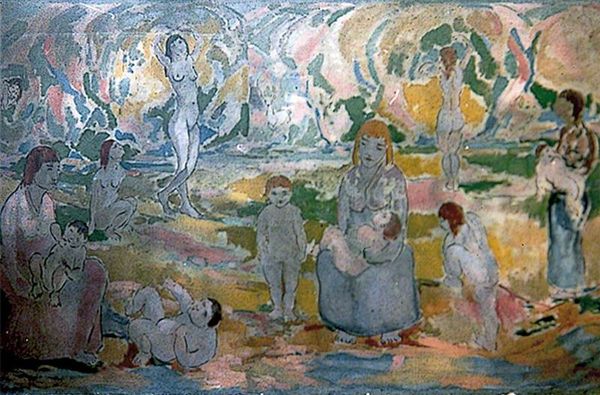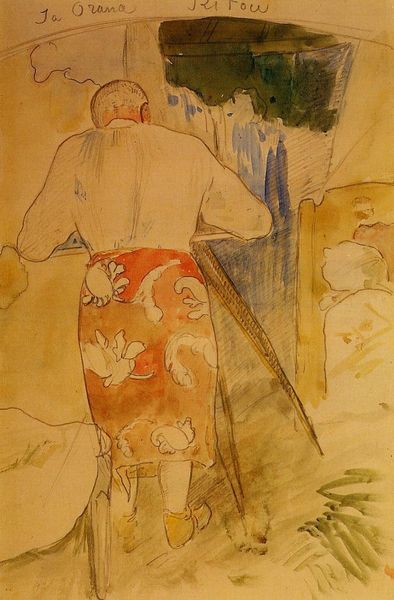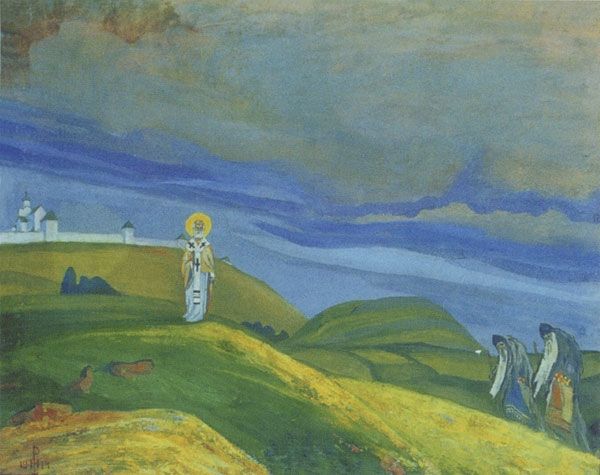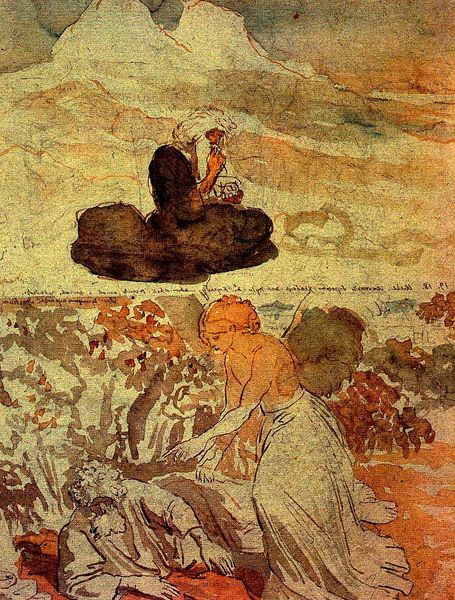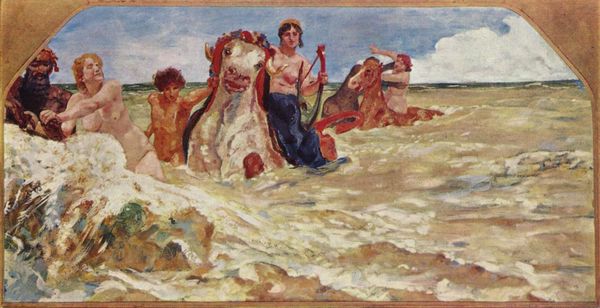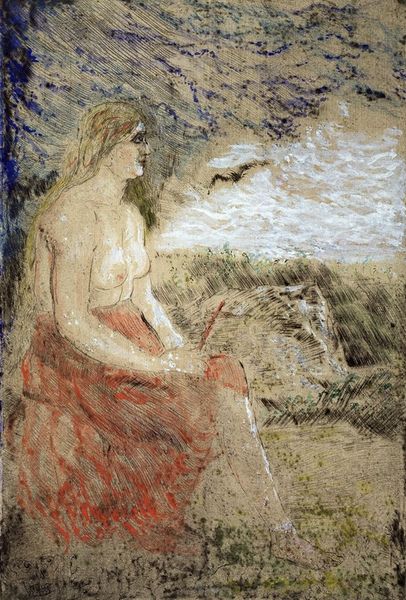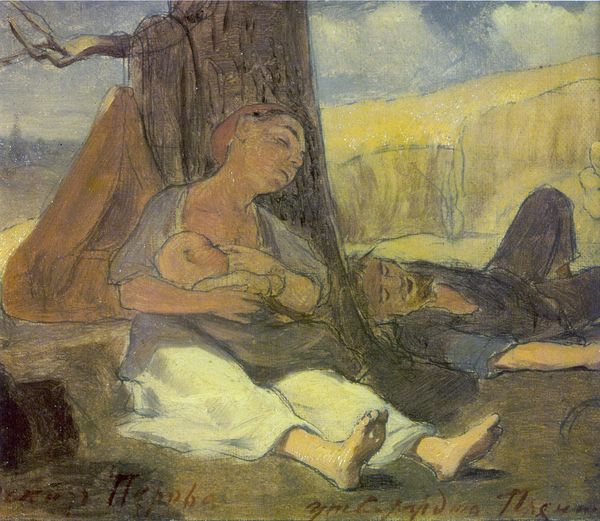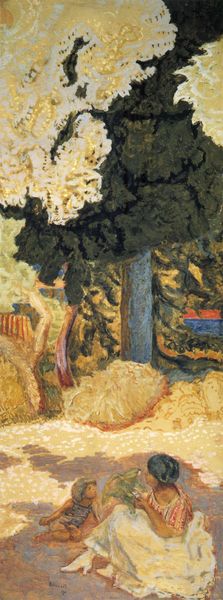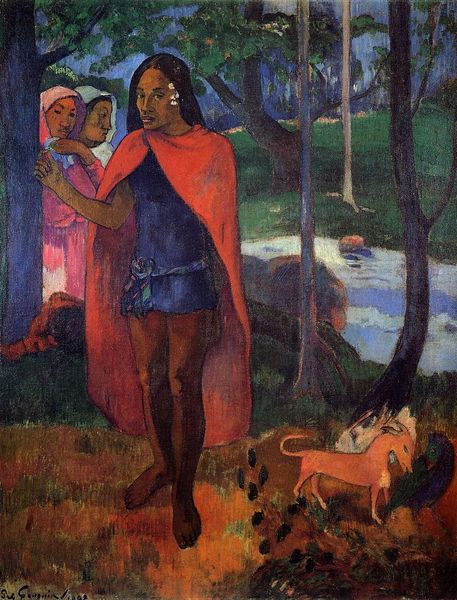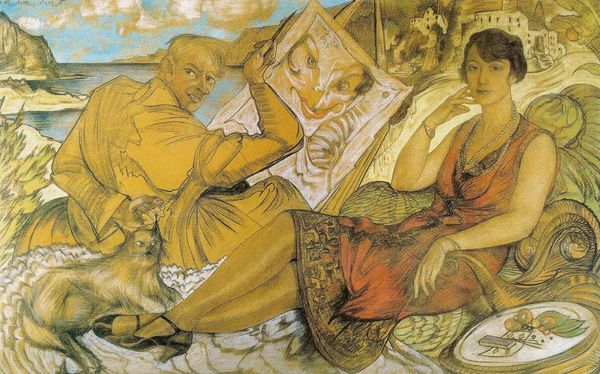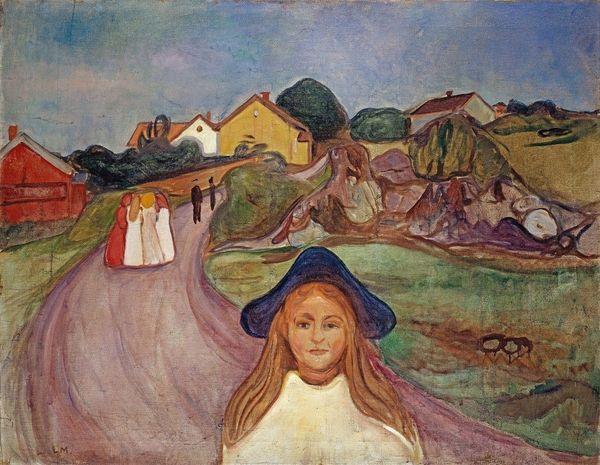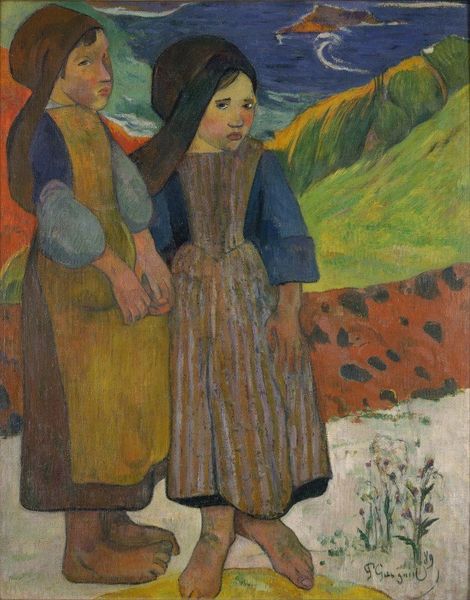
oil-paint
#
portrait
#
mother
#
oil-paint
#
landscape
#
figuration
#
oil painting
#
child
#
expressionism
#
painting art
#
modernism
#
expressionist
Dimensions: 455 x 1160 cm
Copyright: Public domain
Curator: Edvard Munch's "Alma Mater," painted in 1916, graces the University of Oslo. What strikes you first about it? Editor: It’s huge. Almost a mural! And the textures… the canvas itself feels raw, part of the composition. I imagine Munch wrestled with this, physically applying paint to make such a monumental statement. Curator: Indeed. Note how Munch uses the archetypal symbol of the nurturing mother alongside figures rising up on the ground, perhaps suggesting intellectual aspirations nurtured from a primal source? Editor: It feels almost allegorical, then. I see the visible brushstrokes everywhere, and that makes me think about the sheer effort. Did assistants help him with this? I am interested in knowing more about how such a big work would have come together in his studio at the time. Curator: Considering Munch's mental state and self-image during this period, the idealized image of motherhood speaks volumes. Mother figures abound in Munch’s visual repertoire. His mother, a key image throughout his life. Editor: Is it more idealized or perhaps a return to a very concrete image and materiality? What strikes me is the flatness, the almost decorative quality, clashing with the implied depth. Like looking at a tapestry, especially with those earth tones weaving throughout the water and figures. Did he envision it that way? Curator: The painting represents the power of creation, and regeneration that speaks of the primal forces, but then there's that odd detail of what looks like a couple embracing in the front... So, on the other hand, one sees the erotic impulse—another crucial Munchian theme—as vital creative impulse, here grounded in materiality as well. Editor: So you're suggesting he embedded multiple layers within this single painted surface. In other words, beyond merely applying layers of pigment. What do you make of the rough canvas underneath all this pigment? Curator: This allows me to see Munch grappling with profound universal ideas about intellect and physical bodies in ways that still engage viewers, it seems to me, today. Editor: Yes, the work manages to evoke the tactile nature of paint, reminding us of its origins and application – something to meditate on.
Comments
No comments
Be the first to comment and join the conversation on the ultimate creative platform.
